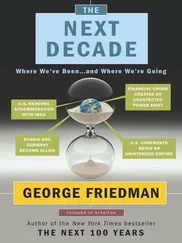The husband’s marital happiness was what really mattered for later health. It was key to predicting health and well-being decades later, whether we were predicting the health of men or women. In other words, knowing that James was very happily married in 1940 let us successfully predict that James would be well decades later, but knowing that his wife, Irene, was also happily married did not add any useful information to understanding James’s health. And knowing that a Terman woman’s husband was unhappy in 1940 let us predict that she would be unhealthy and unhappy as she aged. Her own happiness when she filled out the survey in 1940 mattered much less.
Obvious simple explanations such as later divorce do not hold up. Many kinds of influences are likely coming into play. This finding does fit with other research on marriage indicating that a wife’s well-being is much more affected by a difficult, hostile husband than a husband’s well-being is affected by a difficult, hostile wife. 59 59 Ibid.
Could this finding be a sign of earlier times—applicable to the Terman participants’ mid-twentieth-century lives—that would no longer be true today? The question is a reasonable one, but more challenging to tackle than it first appears. Any finding that comes out of a long-term study, even a careful one, is “outdated” by the time the results come in. By definition, a forty-five-year study of married thirty-year-olds might no longer be directly relevant to the health of the next generation of thirty-year-olds. This complicated state of affairs does not mean that we can never learn anything of value. Rather, it means that we need to examine the relevant assumptions and conditions and see if they hold true in other times and places. We have already seen that many divorced women were able to thrive, and so the old stigma of divorce could not be the issue. We consider some of these matters of male-female differences later in this book.
Looking over various statistical analyses, our finding holds up quite well—a happy husband is good for the health and well-being of both the husband and the wife. As a new twist on the common wisdom that “a happy wife is a happy life,” we propose: “a happy man means a healthy clan.”
SELF-ASSESSMENT: MARITAL HAPPINESS
For those who are married or in a long-term relationship, the following scale assesses how happy one is with the relationship. Read each item below and circle the number that you feel best represents your feelings.
Untrue 1 2 3 4 5 completely true
1. If I had the chance to do it all over again, I would choose my same spouse (partner).
1 2 3 4 5
2. I prefer to spend any extra or unexpected leisure time with my spouse.
1 2 3 4 5
3. My marriage is extraordinarily happy.
1 2 3 4 5
4. My spouse and I share almost all of our outside interests.
1 2 3 4 5
5. I would not want to change my spouse’s personality in the slightest.
1 2 3 4 5
6. My spouse and I almost always agree on family matters (such as finances and children).
1 2 3 4 5
7. My spouse and I almost always agree on matters of religion, philosophy of life, and so on.
1 2 3 4 5
8. There are many activities I enjoy doing with my spouse (such as music, travel, recreation, and so on).
1 2 3 4 5
9. My spouse is appropriately affectionate to me.
1 2 3 4 5
10. When we are alone together, my spouse and I are almost continuously delighted with each other.
1 2 3 4 5
Scoring: Each of these statements is worded in a positive direction, so there is no need for “reverse coding.” Simply sum the numbers you circled—your score will range between 10 and 50. An average score on this scale is 28. The happiest spouses (those in the upper 25 percent) have scores of 35 or above, whereas those in the bottom quartile on marital happiness score at or below 19.
Sexual Activity and Satisfaction
A wife’s marital satisfaction must matter in some realms. A courageous and audacious researcher, Dr. Terman wasn’t afraid to ask about sexual activity. Around 1941, while reporting their marital satisfaction, the married Terman participants also revealed their sexual satisfaction and the average length of their sexual encounters. As modern researchers would later do, Terman also asked about the women’s frequency of orgasm during sex. We wondered, could it be the case that a great marriage in this realm would have significant value for women’s health?
Dr. Terman made sure that his field assistants were present when this touchy questionnaire was completed, in order to prevent husband and wife from collaborating or influencing each other. Fifty years later, our graduate student Dan Seldin pulled out the relevant questions and data and examined how such matters might relate to long life.
In 1941, Patricia, Charles, and the others answered many personal questions about their sex lives. Patricia might have been prudent but she was not prudish. She was asked, “How well mated are you and your husband, from the strictly sexual point of view?” Responses could range on a five-point scale from “very badly” to “no two could be more perfectly mated sexually.” The average here was 3.5, somewhat above the midpoint. Patricia’s response was “extremely well-mated” (a 4 on the scale). She and the other women also reported frequency of orgasm during intercourse, on a four-point scale from “never” to “always.” The average was 2.8, again revealing a generally good but not outstanding sexual satisfaction. And Patricia was again near the top.
These answers allowed us to create a predictor measuring what Dr. Terman called “orgasm adequacy of wives.” 60 60 The Terman “orgasm adequacy” phrase is from L. M. Terman and M. H. Oden, Genetic Studies of Genius , vol. 4, The Gifted Child Grows Up: Twenty-five Years’ Follow-up of a Superior Group (Stanford, CA: Stanford University Press, 1947), 249.
We looked to see if this sexual satisfaction would be related to a longer life, after taking the women’s personalities into account. Women who had a higher frequency of achieving orgasm during intercourse tended to live longer than their less fulfilled peers. 61 61 61 Our study of sexual activity and long life is D. R. Seldin, H. S. Friedman, and L. R. Martin, “Sexual Activity as a Predictor of Life-Span Mortality Risk,” Personality and Individual Differences 33 (2002): 409-25.
We—and lots of women out there—wish we knew why. The limited sexual information available from other studies does suggest an association between sexual activity and health, in both men and women, but the links are hazy. 62 62 62 For other studies on sexual activity and health see G. D. Smith, S. Frankel, and J. Yarnell, “Sex and Death: Are They Related? Findings from the Caerphilly Cohort Study,” BMJ 315 (1997): 1641-44; and H. K. Chen, C. D. Tseng, S. C. Wu, T. K. Lee, and T. H. H. Chen, “A Prospective Cohort Study on the Effect of Sexual Activity, Libido and Widowhood on Mortality among the Elderly People: 14-Year Follow-up of 2453 Elderly Taiwanese,” International Journal of Epidemiology 36 (2007): 1136-42.
There is a dearth of scientific information available on sexual fulfillment and long-term health, not really so surprising when one imagines what it must be like going to a government-funded research agency to ask for money to study orgasms and health. Here’s what we do know. Sexual satisfaction tends to play a role in a happier marriage, and happier marriages play a role in greater sexual satisfaction (a chicken-and-egg dilemma). And we know that people in stable, fulfilling marriages tend to be healthier. What is causing what? We won’t know until the completion of other long-term studies of intimacy, personality, behavior, and health. At the moment, we can say that a sexually satisfying and happy marriage is a very good indicator of future health and long life.
Читать дальше











